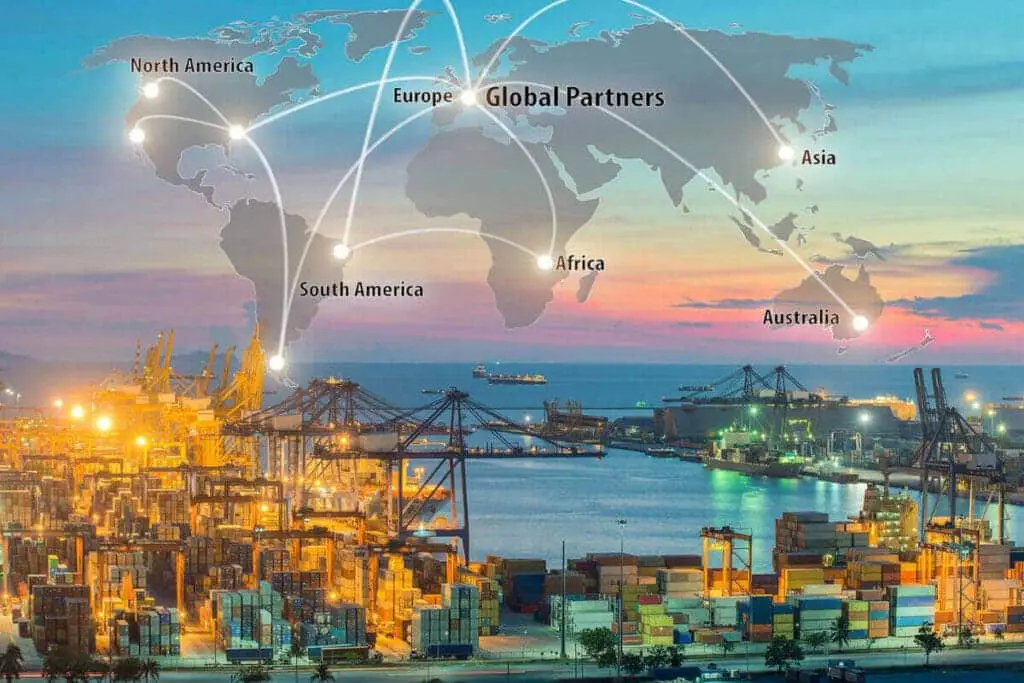Sourcing or finding new products and services is the lifeline of any company. The reason is that products and services are constantly changing.
For a company to remain relevant, it must constantly look for new products and services. This is because we live in an ever-complex and changing world. Three main things should be considered for finding new global trade sources: quality, price, and quantity. Read one as we explore each of these and why they are essential.
Table of Contents
- The Importance Of New Sources In Global Trade: A Focus On Quality, Price, And Quantity
- The Interplay Of Quality, Price, And Quantity In-Sourcing
- Navigating The Sourcing Terrain: Quality, Price, And Quantity
- Harnessing The Power Of Technology In-Sourcing
- Related Content
The Importance Of New Sources In Global Trade: A Focus On Quality, Price, And Quantity
In today’s competitive market, businesses continually vie for consumers’ attention, aiming to offer the best products and services at the most competitive prices. One of the most significant ways companies maintain this edge is by sourcing new sources of goods or services that align with their business needs and consumer demands.
However, it’s not just about finding new sources; the key factors driving effective sourcing are quality, price, and quantity. Read on as we delve deeper into why these factors are pivotal in sourcing new resources and how they can impact global trade.
Quality: Setting High Standards
Quality has become the ultimate defining factor in purchasing decisions for consumers worldwide. Gone are the days when consumers would settle for inferior goods or services because of budget constraints or limited choices.
Today’s consumers are enlightened and quality-conscious, expecting the best value for their money.

The rise of production powerhouses like China has significantly contributed to this shift in consumer behavior. Over the years, China’s manufacturing sector has perfected the art of producing high-quality products at affordable prices, forcing industries worldwide to level up their quality game. This new standard isn’t an exception; it has become the norm.
However, quality isn’t just about the end product; it also refers to the competencies of the factories or companies from which businesses source their goods.
Are these factories capable of consistently delivering products that meet the high-quality standards of businesses and their customers? Can they adapt to changing market demands and continuously innovate their product lines?
These are critical questions that businesses must consider when looking for new sources.
Price: Striking The Balance Between Quality And Cost
While consumers are increasingly quality-focused, they also remain price-sensitive. Everyone loves a good deal, and in a world where many companies offer high-quality products at discounted prices, consumers have become accustomed to expecting more for less.

This consumer trend has placed immense pressure on wholesalers and retailers to find the perfect balance between quality and cost. Sourcing new suppliers that can provide high-quality products at lower prices has become a necessity rather than a luxury. This delicate balance is critical to a company’s competitive strategy, driving its profitability and market position.
However, sourcing based solely on the lowest price can be dangerous. It’s essential to remember that quality and cost are often correlated.
Sourcing from the cheapest supplier may initially seem like a good idea. But if the quality of the products doesn’t meet customers’ expectations, it can harm the company’s reputation and customer relationships in the long run.
Quantity: Meeting Demand Head-On
Finally, quantity is another crucial factor in sourcing new supplies. Companies need suppliers that can deliver the right quantities at the right time. Overproduction can lead to wasted resources, while underproduction can result in lost sales opportunities.

Interestingly, the challenge lies in finding suppliers that can produce large quantities or can also cater to orders of lower quantities without compromising price. This is particularly relevant for smaller businesses that cannot place large orders but still require access to quality products at competitive prices.
Moreover, the ability of suppliers to adapt to fluctuating demand is critical. In today’s volatile market conditions, demand can change rapidly. Suppliers that can scale up or down based on the company’s needs can provide a significant competitive advantage.
The Interplay Of Quality, Price, And Quantity In-Sourcing
Sourcing new suppliers is a complex process that requires careful consideration of several factors, with quality, price, and quantity leading the charge. Businesses must strategically analyze these factors to find suppliers that can meet their unique needs and help them stay ahead in today’s competitive market.
Moreover, sourcing isn’t a one-time process. It’s an ongoing effort requiring businesses to continually monitor and evaluate their sourcing strategies and suppliers. As markets evolve, consumer demands change, and new technologies emerge, companies may need to find new sources to better align with these changing dynamics.
Navigating The Sourcing Terrain: Quality, Price, And Quantity
Companies sourcing new products and services should remain relevant and vital for years. But navigating the sourcing terrains is not always easy and can be filled with roadblocks and potholes.

Below are things that companies can consider when looking for new sources.
Quality: Beyond The Product
Looking forward, quality will continue to be a critical factor in sourcing decisions. However, businesses should consider quality broader than just the product.
This includes the quality of service suppliers offer, their adherence to ethical standards and sustainable practices, their financial stability, and their ability to innovate.
For instance, businesses can prioritize sourcing from suppliers, demonstrating a solid sustainability commitment. This aligns with increasing consumer preference for sustainable products and helps companies to mitigate potential risks associated with environmental regulations and standards.
Price: More Than Just A Number
While price will always be a significant consideration, businesses should strive to understand the cost of their sourcing decisions. This includes considering hidden costs such as shipping and handling, customs and duty fees, and the potential costs of poor quality, such as returns and warranty claims.
Furthermore, businesses can leverage strategic sourcing practices to create value rather than merely focusing on obtaining the lowest price. This could involve developing long-term relationships with suppliers to negotiate better prices, leveraging volume discounts, or collaborating with suppliers to improve efficiency and reduce costs.
Quantity: Flexibility Is Key
In terms of quantity, businesses should prioritize flexibility. As mentioned, finding suppliers that can adapt to changing demand levels is essential in today’s volatile market conditions. However, this flexibility should not come at the expense of cost or quality.
Additionally, businesses can consider strategies such as Just-In-Time (JIT) inventory management, which involves sourcing goods as they are needed in the production process to reduce inventory costs and waste. However, this strategy requires reliable suppliers to deliver the right quantities at the right time.
Harnessing The Power Of Technology In-Sourcing
Emerging technologies like artificial intelligence (AI), blockchain, and big data are revolutionizing the sourcing process. These technologies can provide valuable insights into supplier performance, facilitate real-time communication and collaboration with suppliers, and enhance transparency in the supply chain.
For example, AI can help businesses predict future demand and make more informed sourcing decisions. Blockchain can help ensure product authenticity and ethical sourcing, while big data can provide insights into market trends, consumer behavior, and supplier performance.
As businesses navigate the complex sourcing terrain, leveraging these technologies will be vital to staying ahead of the curve.
The importance of sourcing new sources cannot be overstated in today’s competitive market. Quality, price, and quantity remain at the core of effective sourcing strategies, but their interpretation and implementation should evolve with changing market dynamics and consumer demands.
With the rise of technology and the increasing focus on sustainability, businesses must reimagine their sourcing strategies to stay competitive and relevant. This means considering quality, price, and quantity in a broader sense and leveraging new technologies and practices to optimize their sourcing efforts.
Ultimately, effective sourcing is about finding suitable suppliers that can deliver the right products, at the right price, in the right quantities, and at the right time. By keeping a finger on the pulse of quality, price, and quantity, businesses can ensure they are on the right path to sourcing success.
If you are interested in seeing how Mondoro can help you with your strategic sourcing – we would love to talk to you about how we can help you.
Find out more about how Mondoro can help you create, develop, and manufacture excellent home decor and home furniture products – don’t hesitate to contact me, Anita. Check out my email by clicking here or become a part of our community and join our newsletter by clicking here.
Mondoro gives out a FREE Lookbook to anyone interested. You can receive a copy of our latest Lookbook by clicking here.
Listen to our Podcast called Global Trade Gal. You can find it on all major podcast platforms. Try out to listen to one of our podcasts by clicking here.
Subscribe to our Mondoro Company Limited YouTube Channel filled with great videos and information by clicking here.
Related Content
What Are The Major Benefits Of Strategic Sourcing?
Never underestimate the proper use of the strategic sourcing process in your supply chain. Strategic sourcing is a significant benefit to all stakeholders within the supply chain. Strategic sourcing forces all stakeholders to examine the supply chain strategy in detail. Strategic sourcing helps to eliminate any potential risks or problems.
You can discover more by reading What Are The Major Benefits Of Strategic Sourcing? by clicking here.
Seven-Step Strategic Sourcing Process Explained
A seven-step strategic sourcing strategy process will help companies be successful when looking to procure a product or a commodity. If companies take the time to go through each of the seven steps, this will help them to ensure they are successful with their sourcing needs.
You can find out more by reading our blog Seven-Step Strategic Sourcing Process Explained by clicking here.
Product Sourcing and Strategic Sourcing Explained
Product sourcing is when you source or look to find a supplier for a product you need. Strategic sourcing is strategically sourcing products. Strategic sourcing is not about the lowest purchase price but overall cost. Product sourcing and strategic sourcing are very similar, but strategic sourcing is sourcing with a plan in place.
You can learn more by reading Product Sourcing and Strategic Sourcing Explained by clicking here.


